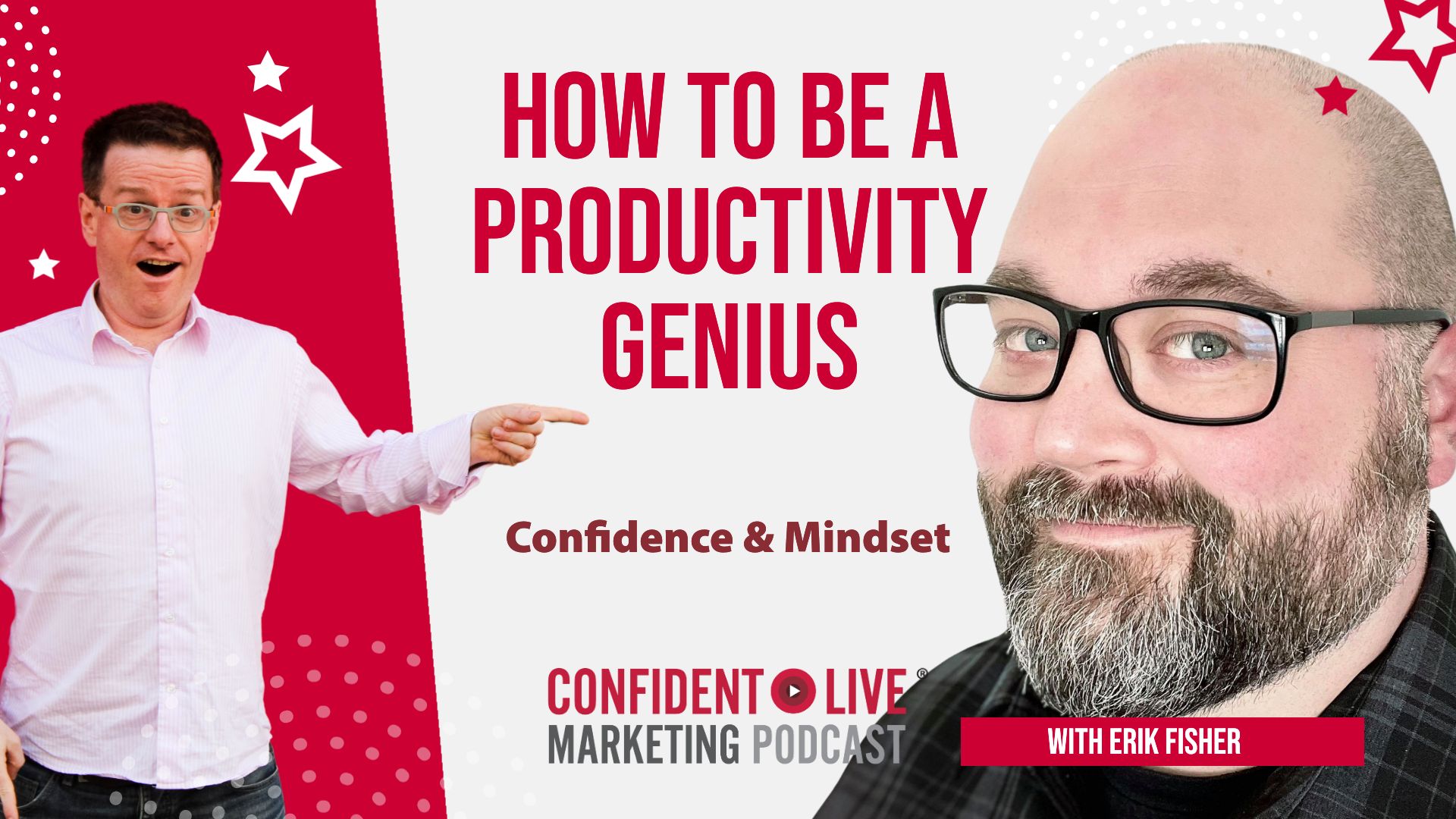How to be a Productivity Genius
By Ian Anderson Gray with Erik Fisher
Confident Live Marketing Podcast
Episode 134
Duration: 55 minutes 8 seconds
Episode Theme: Confidence & Mindset
November 12, 2021

Want to up your productivity and overcome procrastination for good?
I interviewed Erik Fisher for my podcast, who gives amazing tips and hacks which will help reduce procrastination and help you become more productive.
What You’ll Learn
[4:38] How Erik started his podcast
[12:05] How to overcome procrastination
[18:24] The importance of mindset and environment
[21:01] How coaching can help overcome procrastination
[23:38] How we can go beyond the to-do list
[29:11] A methodology to overcome procrastination
[32:23] Erik’s top productivity tools
[35:55] Using the to-do list to plan your time
[41:15] Should you use pen and paper?
[44:31] Other ways to be productive
[47:12] Wearable tech and other tips
Resources
Watch Episode 134

About Erik Fisher
Erik has been working in social media for over 10 years as a community manager and social media manager. He’s also the producer and host of the long-running ‘Beyond the to-do List’ podcast.

